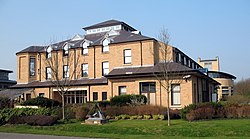
The Institute of Mathematics and its Applications (IMA) is the UK's chartered professional body for mathematicians and one of the UK's learned societies for mathematics.

Sir David James Wallace, CBE, FRS, FRSE, FREng is a British physicist and academic. He was the Vice-Chancellor of Loughborough University from 1994 to 2005, and the Master of Churchill College, Cambridge from 2006 to 2014.
The Engineering and Physical Sciences Research Council (EPSRC) is a British Research Council that provides government funding for grants to undertake research and postgraduate degrees in engineering and the physical sciences, mainly to universities in the United Kingdom. EPSRC research areas include mathematics, physics, chemistry, artificial intelligence and computer science, but exclude particle physics, nuclear physics, space science and astronomy. Since 2018 it has been part of UK Research and Innovation, which is funded through the Department for Business, Energy and Industrial Strategy.
Sir John Frank Charles Kingman is a British mathematician. He served as N. M. Rothschild and Sons Professor of Mathematical Sciences and Director of the Isaac Newton Institute at the University of Cambridge from 2001 until 2006, when he was succeeded by David Wallace. He is known for developing the mathematics of the coalescent theory, a theoretical model of inheritance that is fundamental to modern population genetics.
Sir Roy Malcolm Anderson is a leading international authority on the epidemiology and control of infectious diseases. He is the author, with Robert May, of the most highly cited book in this field, entitled Infectious Diseases of Humans: Dynamics and Control. His early work was on the population ecology of infectious agents before focusing on the epidemiology and control of human infections. His published research includes studies of the major viral, bacterial and parasitic infections of humans, wildlife and livestock. This has included major studies on HIV, SARS, foot and mouth disease, bovine tuberculosis, bovine spongiform encephalopathy (BSE), influenza A, antibiotic resistant bacteria, the neglected tropical diseases and most recently COVID-19. Anderson is the author of over 650 peer-reviewed scientific articles with an h-index of 125.
Sydney Goldstein FRS was a British mathematician noted for his contribution to fluid dynamics. He is described as: "... one of those who most influenced progress in fluid dynamics during the 20th century."

Dame Frances Clare Kirwan, is a British mathematician, currently Savilian Professor of Geometry at the University of Oxford. Her fields of specialisation are algebraic and symplectic geometry.
John Francis Toland FRS FRSE is an Irish mathematician based in the UK. From 2011 to 2016 he served as Director of the Isaac Newton Institute for Mathematical Sciences and N M Rothschild & Sons Professor of Mathematical Sciences at the University of Cambridge.

Ulrike Luise Tillmann FRS is a mathematician specializing in algebraic topology, who has made important contributions to the study of the moduli space of algebraic curves. She is the president of the London Mathematical Society in the period 2021–2022.
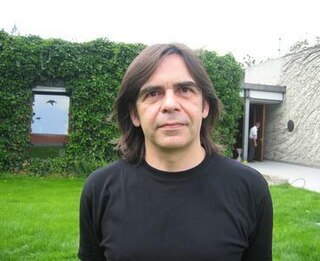
Endre Süli is a mathematician. He is Professor of Numerical Analysis in the Mathematical Institute, University of Oxford, Fellow and Tutor in Mathematics at Worcester College, Oxford and Adjunct Fellow of Linacre College, Oxford. He was educated at the University of Belgrade and, as a British Council Visiting Student, at the University of Reading and St Catherine's College, Oxford. His research is concerned with the mathematical analysis of numerical algorithms for nonlinear partial differential equations.

Dame Angela Ruth McLean is professor of mathematical biology in the Department of Biology, University of Oxford, and Chief Scientific Adviser to the UK Government.
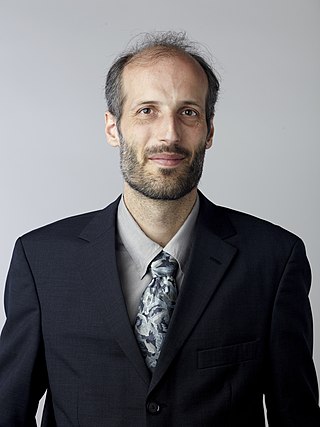
Sir Martin Hairer is an Austrian-British mathematician working in the field of stochastic analysis, in particular stochastic partial differential equations. He is Professor of Mathematics at EPFL and at Imperial College London. He previously held appointments at the University of Warwick and the Courant Institute of New York University. In 2014 he was awarded the Fields Medal, one of the highest honours a mathematician can achieve. In 2020 he won the 2021 Breakthrough Prize in Mathematics.

Michael Elmhirst Cates is a British physicist. He is the 19th Lucasian Professor of Mathematics at the University of Cambridge and has held this position since 1 July 2015. He was previously Professor of Natural Philosophy at the University of Edinburgh, and has held a Royal Society Research Professorship since 2007.
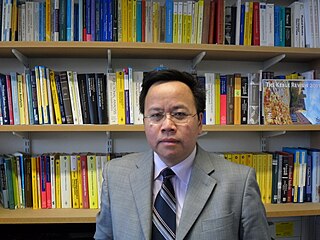
Gui-Qiang George Chen is a Chinese-born American-British mathematician. Currently, he is Statutory Professor in the Analysis of Partial Differential Equations, Director of the Oxford Centre for Nonlinear Partial Differential Equations, and Director of the EPSRC Centre for Doctoral Training in Partial Differential Equations at the Mathematical Institute, and Professorial Fellow at Keble College, located at the University of Oxford, as well as Life Member of Clare Hall, University of Cambridge.
Simon Tavaré is the founding Director of the Herbert and Florence Irving Institute of Cancer Dynamics at Columbia University. Prior to joining Columbia, he was Director of the Cancer Research UK Cambridge Institute, Professor of Cancer Research at the Department of Oncology and Professor in the Department of Applied Mathematics and Theoretical Physics (DAMTP) at the University of Cambridge.

Caroline Mary Series is an English mathematician known for her work in hyperbolic geometry, Kleinian groups and dynamical systems.
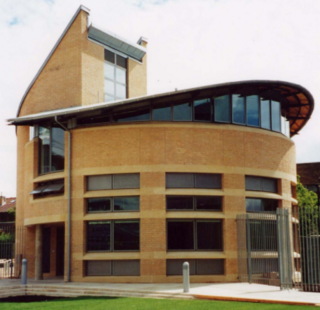
The Newton Gateway to Mathematics, formerly known as the Turing Gateway to Mathematics (TGM), is a knowledge intermediary at the Isaac Newton Institute for Mathematical Sciences (INI) between the users of mathematics and those focused on research. It is also supported by the University of Cambridge. It regularly hosts events that focus on the discussion and exploration of mathematical techniques and models.

The Henry Royce Institute is the UK’s national institute for advanced materials research and innovation. Its vision is to identify challenges and to stimulate innovation in advanced materials research to support sustainable growth and development. Royce aims to be a "single front door" to the UK’s materials research community. Its stated mission is to “support world-recognised excellence in UK materials research, accelerating commercial exploitation of innovations, and delivering positive economic and societal impact for the UK.”
Julia Rose Gog is a British mathematician and professor of mathematical biology in the faculty of mathematics at the University of Cambridge. She is also a David N. Moore fellow, director of studies in mathematics at Queens' College, Cambridge and a member of both the Cambridge immunology network and the infectious diseases interdisciplinary research centre.
Xenia de la Ossa Osegueda is a theoretical physicist whose research focuses on mathematical structures that arise in string theory. She is a professor at Oxford's Mathematical Institute.
